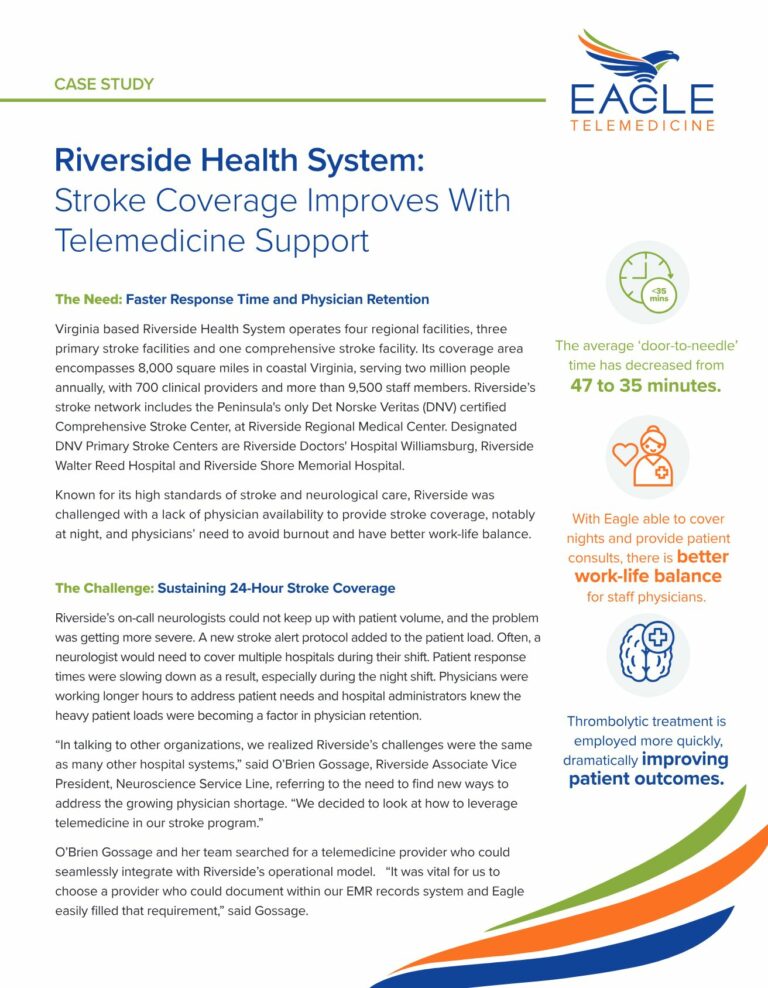About the Hospital
Virginia based Riverside Health System operates four regional facilities, three primary stroke facilities and one comprehensive stroke facility. Despite being known for its high standards of stroke and neurological care, Riverside was challenged with a lack of physician availability to provide stroke coverage, notably at night, and physicians’ need to avoid burnout and have better work-life balance.
The Challenge
Riverside’s on-call neurologists could not keep up with patient volume, and the problem was getting more severe. Often, a neurologist would need to cover multiple hospitals during their shift. Patient response
times were slowing down as a result, especially during the night shift. Physicians were working longer hours and hospital administrators knew the heavy patient loads were becoming a factor in physician retention.
The Solution
“In talking to other organizations, we realized Riverside’s challenges were the same as many other hospital systems,” said O’Brien Gossage, Riverside Associate Vice President, Neuroscience Service Line, referring to the need to find new ways to address the growing physician shortage. “We decided to look at how to leverage telemedicine in our stroke program.” Riverside Health System embarked with implementing Eagle’s TeleNeurology program to support stroke coverage. “We were experiencing inconsistent response times affecting patient outcomes, particularly at night. Eagle’s TeleNeurologists provided the rapid response consistency we needed,” said Gossage. The proven benefits of the TeleNeurology service have prompted Riverside to explore adding Tele-ICU and TelePsychiatry programs to their service offerings.
Benefits & Outcomes
- Sustainable Model of 24/7 Care
- Improved Physician Work-Life Balance
- Faster Response Times
What Our Clients Say

